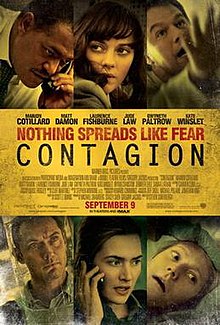Ronald Reagan has said, “The nine most terrifying words in the English language are: I’m from the Government, and I’m here to help.” One of the reasons for the truth behind this statement is the sheer bureaucracy tied to anything with the government. There have been a few films that have made light of this, including Brazil (1985) and The Hitchhiker’s Guide to the Galaxy (2005), both of which play off of the ridiculous and circuitous nature of the government and its propensity for filling out forms. Depending on your political opinion, you may think the government should control everything . . . or you may think they should control nothing but the national defense. Needless to say, many government-run agencies perform some function to help their constituents. This week’s two films examine real and fictional government agencies.
Men in Black 3
Year: 2012
Rating: PG-13
Length: 106 minutes / 1.76 hours
While many people want transparency in their government agencies, the simple fact of the matter is that much of what they do is classified. Somehow, that secrecy is part of what makes these agencies so appealing for use in cinema. Eventually, these secrets become unclassified so the real-life stories can be told. No agency is immune from this. From the FBI and J. Edgar (2011) to the CIA and Argo (2012) to the NSA and Snowden (2016), these real situations are sometimes all too unbelievable. On the other side of this coin, one could argue there are fictional agencies so secret that nobody knows about them. For instance, the Impossible Missions Force (or IMF) from the Mission: Impossible franchise or the Men in Black (or MIB) from its own, titular franchise have given us glimpses into the possible services super-secret government agencies could provide.
For many decades, the Men in Black have helped to cover up the existence of aliens on Earth. Part of the reason for this is due to the ArcNet, a defense system in orbit around the planet that keeps hostile alien races from attacking Earth. One of these hostile races, the Boglodites, is able to finally penetrate the system when one of their own, Boris the Animal (Jemaine Clement), travels back in time to prevent the implementation of the ArcNet. This altered timeline isn’t noticed by anyone, except for MIB Agent J (Will Smith). He has noticed his partner, Agent K (Tommy Lee Jones) has gone missing and takes it upon himself to travel back to 1969 to thwart Boris and save K (Josh Brolin). Along the way, he learns some important history regarding the MIB, as well as some essential information regarding his father.
Contagion
Year: 2011
Rating: PG-13
Length: 106 minutes / 1.76 hours
One motif that tends to run through these aforementioned government agencies is the theme of “protecting the people.” What the populace doesn’t know can’t hurt them, so the goal of the FBI’s and CIA’s is to take care of the threats against the people they are sworn to protect in such a way as to not induce a country-wide panic. Now, these threats are often in the form of terrorists, which are people set on harming the citizens of a particular country or ideology. But what about the threats that come from nature itself? While NOAA can see weather trends (as in The Day After Tomorrow (2004)), there’s little they can do to stop them. Sometimes, nature can even cross the boundaries of countries, making it a global problem. This is why the World Health Organization (WHO) exists, and partly why it is featured in World War Z (2013). At home in the United States, we have the CDC to help keep us healthy and safe from the nature of sickness.
Beth Emhoff (Gwyneth Paltrow) returns home to her family with a cold she believes she obtained while on her trip to Hong Kong. Unfortunately, this is no cold. Soon she has infected her son, both of whom die shortly afterward. Upon the loss of two of his family, Mitch Emhoff (Matt Damon) is distraught but also quarantined because the authorities think he may be infected as well. Meanwhile, research is being done at the Centers for Disease Control to determine the origin of the virus and to develop an antidote for it. Popular blogger, Alan Krumwiede (Jude Law) suggests there is a natural cure for the disease, which proves to be nothing more than a false statement to help his financial interests. Pressed for time to save the world, Dr. Ally Hextall (Jennifer Ehle) tests an inoculation serum on herself that then proves her vaccine works. Now it’s up to the CDC to inoculate the remaining survivors.
2 sum it up: 2 films, 2 awesome agencies




